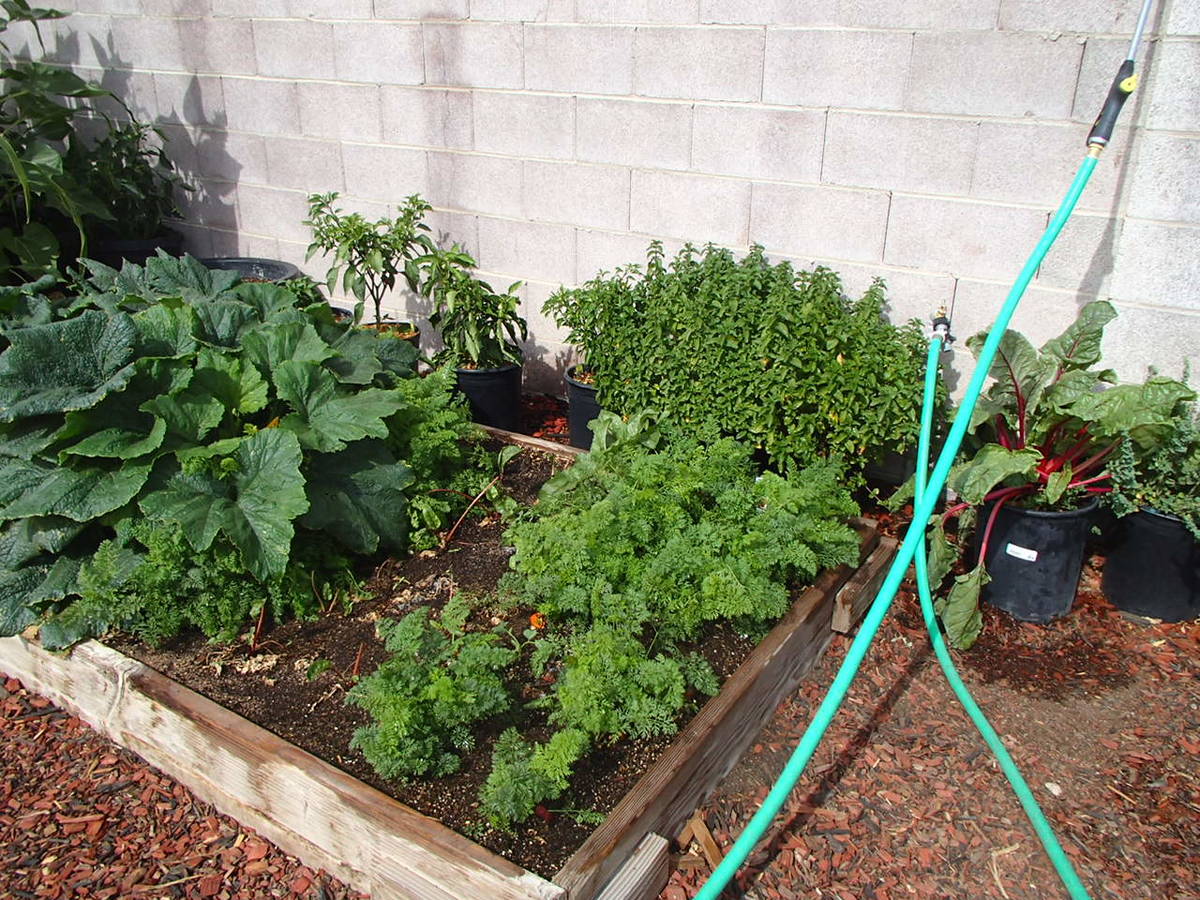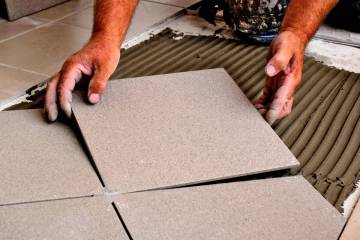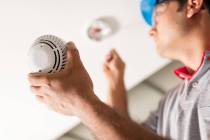Planting calendar will help when growing vegetables
All of you requesting the planting calendar should have received it by now as well as the vegetable-growing bible, written by Dr. Sylvan Wittwer, formerly of Logandale. I told you how important it can be in selecting good varieties for this area, and Wittwer’s vegetable publication makes some solid, old-fashioned varietal recommendations he had success growing.
With the drop in daytime temperatures occurring soon, start thinking about enjoying fall vegetables. Planting fall vegetables starts when temperatures are still hot but transitioning to lower temperatures within a couple of weeks. So, planting from seed may start as early as late July for some fall vegetables and later for others.
It helps to have a planting calendar, but you must pay attention to the current and projected weather conditions too. The projected weather conditions over the next week or two help fine-tune your actual planting dates to days when the best weather will occur. Apps on your phone or computer such as AccuWeather or Weather Underground lets you fine-tune the localized planting calendars like the one I gave you.
Q: When is the best time to plant carrots and pak choi this fall?
A: They are both fall, or cool season, crops. You want hot weather to nearly pass so that the plants are maturing and ready for harvest at the start of cooler weather. Fall-planted cool-season crops are, at the least, sweeter when harvested during cooler weather.
Both carrots and pak choi perform very well planted from seed. But pak choi is traditionally planted as 3- or 4-inch-tall transplants.
Carrots and most other root crops are usually not planted as transplants but planted directly in the garden from seed. If you do elect for carrot transplants, they should be small. They can be planted as transplants if carefully moved into the garden when they are small, only an inch or inch and a half tall.
The problem with root crops like carrots planted as transplants is cutting, breaking or allowing the tender roots to dry out during planting. That causes their edible roots to become forked. Anything that damages the root causes this to happen, so be extremely careful if you decide on transplanting carrots.
To get the earliest jump on production possible, opt for planting while the temperatures are still warm but cooling off during the last month of growth. Depending on the variety, carrots are ready to harvest full-sized around 60 to 75 days after planting. If planting now, the earliest to expect them is 60 days, or about two months, later.
If you plant seed toward the middle of September, figure harvesting around the end of November. But they could’ve been planted earlier. Their eating quality when planting earlier just depends on the sometimes finicky fall weather.
Plant seed every two weeks for continuous harvest. If you are banking on high quality, then the best time for harvest is planning your first harvest Nov. 1 and then harvesting every two weeks through the middle of April. Carrots are a perfect crop for container gardening.
Plant seed extra close together and harvest baby carrots starting about a month to month and a half after seeding. Stop harvesting when the spacing on the packet is achieved, which should be by the last three weeks before final harvest.
Plants grow more slowly as the temperatures get colder. So, carrots harvested in 65 days might take 75 or more days if your planned harvest is in late December. But they will be sweeter.
Pak choi (aka bok choy), a cabbage relative, is cooked for soups and stir-fry and comes with either emerald green, whitish or reddish green/purple stems and dark green leaves. There are some smaller forms that should be planted closer together, but generally they are spaced 12 to 15 inches apart. I like to use triangular spacing to squeeze a few extra plants in.
Some varieties handle heat better than others, but they all taste better when they mature during cool weather. Start harvesting outer leaves, or the whole plant, after about 30 days of growth. Because it’s a cool-season vegetable, the planting dates will be approximately the same time as planting carrots.
Q: I am growing fig trees in pots on my lawn, and their combined weight is about 80 pounds. The landscapers mow once a week and weed whack around these pots, which tears them up. These containers are heavy, and I can’t move them once a week like the landscapers want me to.
A: Fig trees are not a good choice for containers just because fig trees tend to get large. At some point plant these trees in the ground.
If kept too long in containers, the roots will start growing in circles and the tree will become pot-bound. Once the tree becomes pot-bound, it has a tough time establishing in a landscape and is considered worthless after that.
I think you have two choices for your container trees. Either elevate the container so that your maintenance people can trim under them with a line trimmer or keep the grass from growing 12 inches from containers.
Q: We moved into a 16-year-old house two years ago. It has an African sumac in the front-facing west and another African sumac in the backyard facing east. The tree in the front yard drops its leaves during intense summer heat while the one in the back doesn’t. I water them both three times a day for 18 minutes, five days a week with 4-gallons-per-hour emitters.
A: You know I will not approve of daily watering during the hot summer months of anything except lawns, vegetable gardens and annual flowers. Daily watering of trees and shrubs makes them less tolerant of high temperatures.
The tree in the front yard is in a lot more heat than the one in the backyard. I also realize that in some circumstances daily watering is your only alternative.
Please explore redesigning your irrigation system so it waters trees and shrubs properly and encourages better heat tolerance. This redesigning of your irrigation system may solve the front yard trees leaf drop problem.
Include smaller plants that require irrigation growing near the tree; make sure the mulch surrounding that tree decomposes into the soil and is not rock. Using rock on the soil surface of an already hot exposure intensifies the heat and may contribute to this tree’s leaf drop.
Planting smaller plants near the tree that require irrigation increases the amount of water applied around the tree. Both changes may be enough to reduce the leaf drop of your African sumac. If this situation is intolerable, replace the tree with something better suited for that environment such as a palo verde.
Bob Morris is a horticulture expert and professor emeritus of the University of Nevada, Las Vegas. Visit his blog at xtremehorticulture.blogspot.com. Send questions to Extremehort@aol.com.





























